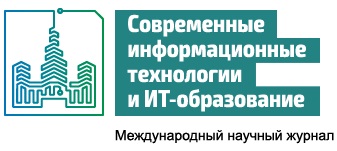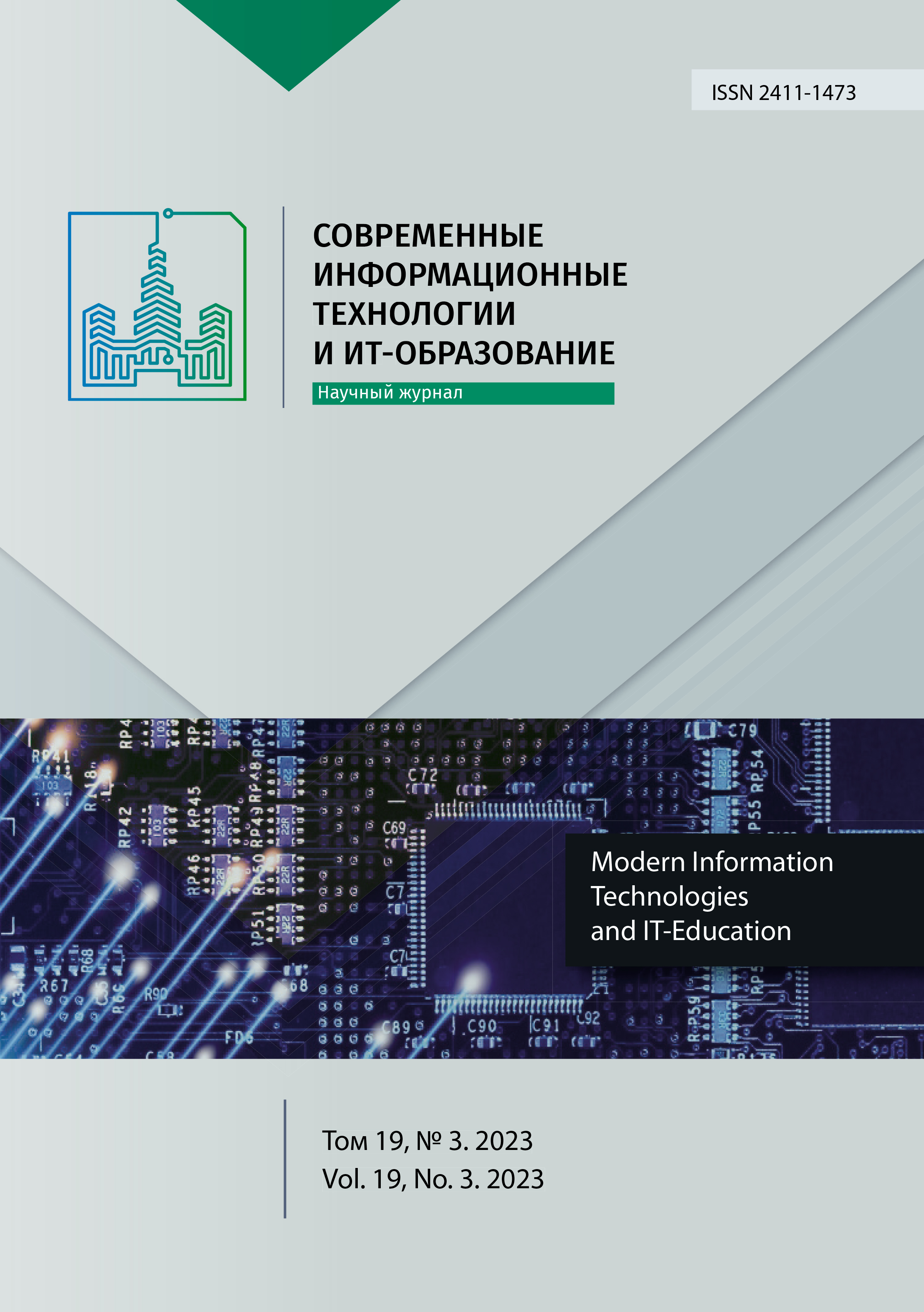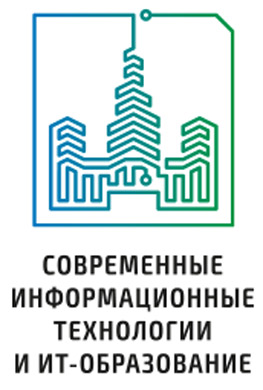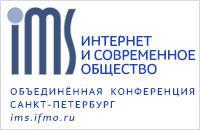Численное решение на неравномерной сетке задачи оптимального управления системой массового обслуживания с малым параметром
Аннотация
Задача о кратчайшей очереди (the shortest queue problem, SQP) широко применяется для процедуры балансировки нагрузки в телекоммуникационных системах. В настоящее время SQP является одной из наиболее интенсивно изучаемых задач и многие исследователи уделяют всестороннее внимание SQP для крупномасштабных систем массового обслуживания (the large-scale queueing systems, LSQS) с очень большим количеством идентичных устройств, так как это необходимо, например, для анализа устойчивой работы сетей 5G/6G. В данной работе применена численная схема высокого порядка на неоднородной сетке для исследования задачи оптимального управления LSQS с малым параметром. Мы предполагаем, что LSQS предоставляет одинаковые сервисы идентичными односервисными устройствами с экспоненциально распределенным временем обслуживания и пуассоновским входящим потоком запросов на услуги LSQS с конечной интенсивностью. LSQS реализует сервисную дисциплину таким образом, что для каждого входящего запроса обеспечивается случайный выбор из любых m таких устройств, которые имеют длину очереди не более величины s, которая не больше величины m. В этом случае динамика LSQS может быть изучена с помощью анализа решений системы дифференциальных уравнений бесконечного порядка с малым параметром, которая может быть получена с помощью методов цепей Маркова. Задача оптимального управления LSQS, которая исследуется в работе, сводится к краевой задачи для этой системы дифференциальных уравнений с малым параметром. В работе используется процедура усечения для системы дифференциальных уравнений бесконечного порядка с малым параметром, что позволяет получить решение краевой задачи для системы дифференциальных уравнений конечного порядка. Для численного решения краевой задачи для усеченной системы дифференциальных уравнений с малым параметром применена численная схема высокого порядка с неоднородной сеткой. Сеточная схема демонстрирует хорошую сходимость решений сингулярно возмущенной краевой задачи для системы дифференциальных уравнений, когда малый параметр стремится к нулю. Результаты моделирования динамики LSQS демонстрируют, что эта LSQS с оптимальным управлением, способна обслуживать большое количество входных запросов, которые поступают с высокой интенсивностью.
Литература
2. Sidorov S., Faizliev A., Balash V., Balash O., Krylova M., Fomenko A. Extended innovation diffusion models and their empirical performance on real propagation data. Journal of Marketing Analytics. 2021;(9):99-110. https://doi.org/10.1057/s41270-021-00106-x
3. Yarkina N., Correia L.M., Moltchanov D., Gaidamaka Y., Samouylov K. Multi-tenant resource sharing with equitable-priority-based performance isolation of slices for 5G cellular systems. Computer Communications. 2022;(188):39-51. https://doi.org/10.1016/j.comcom.2022.02.019
4. Beliakov G., Divakov D.V. Aggregation with dependencies: Capacities and fuzzy integrals. Fuzzy Sets and Systemsthis. 2022;(446):222-232. https://doi.org/10.1016/j.fss.2021.03.009
5. Sevastianov L.A., Lovetskiy K.P., Kulyabov D.S. Multistage collocation pseudo-spectral method for the solution of the first order linear ODE. In: 2022 VIII International Conference on Information Technology and Nanotechnology (ITNT). Samara, Russian Federation: IEEE Computer Society; 2022. p. 1-6. https://doi.org/10.1109/ITNT55410.2022.9848731
6. Tiutiunnik A.A., Divakov D.V., Lovetskiy K.P., Sevastianov A.L. Single-mode propagation of adiabatic guided mode in a smooth transition between planar waveguides. Proceedings of SPIE. 2022. Vol. 12193. Article number: 1219305. https://doi.org/10.1117/12.2626384
7. van Houdt B. Global Attraction of ODE-based Mean Field Models with Hyperexponential Job Sizes. Proceedings of the ACM on Measurement and Analysis of Computing Systems. 2019;3(2):23. https://doi.org/10.1145/3341617.3326137
8. Bu Q.H., Liu L.W., Tang J.S., Zhao Y.Q. Approximations for a Queueing Game Model with Join-the-Shortest-Queue Strategy. Journal of the Operations Research Society of China. 2023;11(3):489-504. https://doi.org/10.1007/s40305-021-00382-5
9. Liu X., Gong K., Ying L. Steady-state analysis of load balancing with Coxian-2 distributed service times. Naval Research Logistics. 2022;69(1):57-75. https://doi.org/10.1002/nav.21986
10. Zhou X., Shroff N., Wierman A. Asymptotically optimal load balancing in large-scale heterogeneous systems with multiple dispatchers. Performance Evaluation. 2021;(145):102146. https://doi.org/10.1016/j.peva.2020.102146
11. Zhu L., Casale G., Perez I. Fluid approximation of closed queueing networks with discriminatory processor sharing. Performance Evaluation. 2020;139:102094. https://doi.org/10.1016/j.peva.2020.102094
12. Qiu B., Chen X.Q., Wu Q. A key design to prolong lifetime of wireless sensor network. Chaos, Solitons & Fractals. 2016;89:491-496. https://doi.org/10.1016/j.chaos.2016.02.025
13. Chen H., Wang Z. Optimal control for parallel queues with a single batch server. Operations Research Letters. 2022;50(4):377-383. https://doi.org/10.1016/j.orl.2022.04.004
14. Haviv M., Ravner L. A survey of queueing systems with strategic timing of arrivals. Queueing System. 2021;(99):163-198. https://doi.org/10.1007/s11134-021-09717-8
15. Banerjee S., Budhiraja A., Puha A.L. Heavy traffic scaling limits for shortest remaining processing time queues with heavy tailed processing time distributions. The Annals of Applied Probability. 2022;32(4):2587-2651. https://doi.org/10.1214/21-AAP1741
16. van der Boor M., Borst S.C., van Leeuwaarden J.S., Johan S.H., Mukherjee D. Scalable load balancing in networked systems: A survey of recent advances. SIAM Review. 2022;64(3):554-622. https://doi.org/10.1137/20M1323746
17. Alnawayseh S.E.A., Al-Sit W.T., Ghazal T.M. Smart Congestion Control in 5G/6G Networks Using Hybrid Deep Learning Techniques. Complexity. 2022;2022(1):1781952. https://doi.org/10.1155/2022/1781952
18. Bushkova T., Moiseeva S., Moiseev A., Sztrik J., Lisovskaya E., Pankratova E. Using Infinite-server Resource Queue with Splitting of Requests for Modeling Two-channel Data Transmission. Methodology and Computing in Applied Probability. 2022;(24):1753-1772. https://doi.org/10.1007/s11009-021-09890-6
19. Nazarov A., Dudin A., Moiseev A. Pseudo Steady-State Period in Non-Stationary Infinite-Server Queue with State Dependent Arrival Intensity. Mathematics. 2022;10(15):2661. https://doi.org/10.3390/math10152661
20. Nazarov A., Phung-Duc T., Izmailova Y. Asymptotic-Diffusion Analysis of Multiserver Retrial Queueing System with Priority Customers. In: Dudin A., Nazarov A., Moiseev A. (eds.) Information Technologies and Mathematical Modelling. Queueing Theory and Applications. ITMM 2020. Communications in Computer and Information Science. Vol. 1391. Cham: Springer; 2021. p. 236-250. https://doi.org/10.1007/978-3-030-72247-0_18
21. Kumar S., Sumit S., Vigo-Aguiar J. A high order convergent numerical method for singularly perturbed time dependent problems using mesh equidistribution. Mathematics and Computers in Simulation. 2022;(199):287-306. https://doi.org/10.1016/j.matcom.2022.03.025
22. Negero N.T. A uniformly convergent numerical scheme for two parameters singularly perturbed parabolic convection diffusion problems with a large temporal lag. Results in Applied Mathematics. 2022;(16);100338. https://doi.org/10.1016/j.rinam.2022.100338
23. Ranjan K.R., Gowrisankar S. Uniformly convergent NIPG method for singularly perturbed convection diffusion problem on Shishkin type meshes. Applied Numerical Mathematics. 2022;(179):125-148. https://doi.org/10.1016/j.apnum.2022.04.015
24. Vasilyev S.A., Bouatta M.A., Tsareva G.O. High-Order Non-uniform Grid Scheme for Numerical Analysis of Queueing System with a Small Parameter. In: Silhavy R., Silhavy P., Prokopova Z. (eds.) Data Science and Algorithms in Systems. CoMeSySo 2022. Lecture Notes in Networks and Systems. Vol. 597. Cham: Springer; 2023. p. 785-797. https://doi.org/10.1007/978-3-031-21438-7_66
25. Vasilyev S.A., Bouatta M.A., Kanzitdinov S.K., Tsareva G.O. High-Order Non-uniform Grid Scheme for Numerical Analysis of Shortest Queue Control Problem with a Small Parameter. In: Silhavy R., Silhavy P. (eds.) Networks and Systems in Cybernetics. CSOC 2023. Lecture Notes in Networks and Systems. Vol. 723. Cham: Springer; 2023. p. 639-653. https://doi.org/10.1007/978-3-031-35317-8_58

Это произведение доступно по лицензии Creative Commons «Attribution» («Атрибуция») 4.0 Всемирная.
Редакционная политика журнала основывается на традиционных этических принципах российской научной периодики и строится с учетом этических норм работы редакторов и издателей, закрепленных в Кодексе поведения и руководящих принципах наилучшей практики для редактора журнала (Code of Conduct and Best Practice Guidelines for Journal Editors) и Кодексе поведения для издателя журнала (Code of Conduct for Journal Publishers), разработанных Комитетом по публикационной этике - Committee on Publication Ethics (COPE). В процессе издательской деятельности редколлегия журнала руководствуется международными правилами охраны авторского права, нормами действующего законодательства РФ, международными издательскими стандартами и обязательной ссылке на первоисточник.
Журнал позволяет авторам сохранять авторское право без ограничений. Журнал позволяет авторам сохранить права на публикацию без ограничений.
Издательская политика в области авторского права и архивирования определяются «зеленым цветом» в базе данных SHERPA/RoMEO.
Все статьи распространяются на условиях лицензии Creative Commons «Attribution» («Атрибуция») 4.0 Всемирная, которая позволяет другим использовать, распространять, дополнять эту работу с обязательной ссылкой на оригинальную работу и публикацию в этом журналe.













